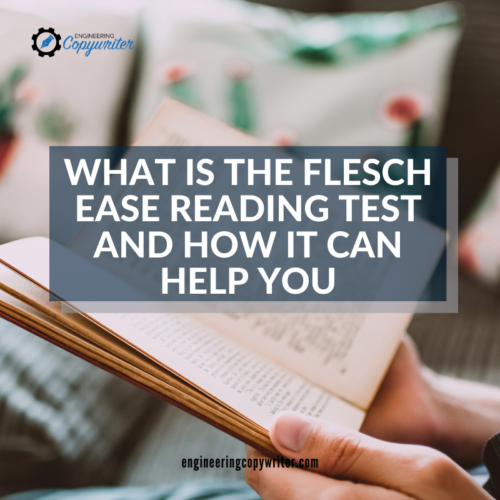
Have you ever started reading an article or blog, and before you finish the first sentence, you click off to the next site? It happens all the time, and why is that? One reason could be that the readability of the article is difficult. This is something that is often seen within the engineering industry where complex language and phrases are often used. You want to ensure that your copy is both insightful and readable for the majority of your audience. This is where the Flesch Ease Reading Test can be very helpful, as it is considered to be one of the oldest and most accurate readability formulas.
With algorithms and the requirements for online content constantly changing it can be challenging to stay at the top of the search engines. There are an array of written and unwritten rules that need to be followed. You should use targeted keywords, without using them too frequently to ensure that your article or blog posts provides both value to the reader and performs well in terms of SEO.
It is increasingly important that SEO features, such as keywords, meta descriptions, and alt text are readable. Publishing website content that is easy to read is vital to keeping your audience engaged and intrigued.

It is unknown whether or not Google calculates Flesch readability, however, we know for certain that the readability of your articles impacts your ranking on search engines. If you come across a blog post or article that is difficult to read, what do you do? You will go ahead and exit that page.
When you have as little as eight seconds to capture the average reader’s attention and encourage them to remain on your page, you’re going to want to make sure that the content is simple enough to read and avoid that dreaded high bounce rate.
When writing about engineering topics we understand that it is important to provide insightful articles that demonstrate your knowledge in a specific field, however, you also need to ensure that is readable to the majority of your audience. Flesch Ease Reading will assist you with this by identifying the readability of your text. The higher the score allocated, the simpler the text is to read.
Rudolph Flesch, an Austrian with a Doctorate in English, came up with this formula in 1948. He introduced his findings in an article entitled ‘A New Readability Yardstick’ which was published in the Journal of Applied Psychology. It is a simple way of assessing the grade level of the reader and has since become the standard readability formula for many US Government agencies and schools.

Basically, the Flesch Ease Reading Test measures the difficulty of a reading passage which is written in English. The way this is done is to count the number of words used per sentence and the number of syllables per word. The Readability Ease (RE)of a passage is calculated by using the Average Sentence Length (ASL) and the Average number of Syllables per Word (ASW) in the following formula: RE = 206.835 – (1.015 x ASL) – (84.6 x ASW). To save yourself the effort of manually calculating your score, you can find out here how to test your document’s readability on Word or Outlook. WordPress plugins like YOAST also calculate this for you automatically, and posts are assigned red, amber or green traffic lights based on the readability.
The Flesch Test will result in a score which is between 0 and 100. The closer the score is to 100 the easier the passage is to read. If your score is between 90 and 100, your writing should be easily understood by the average Fifth Grader. And if your score is 30 or below you would probably be best understood by university graduates. A score of around 60 to 70 is considered average. In summary, text with shorter sentences and words with one or two syllables are easier to read.

So now, all that remains is to know how you can work on improving your Flesch Ease Reading Test Score. Ideally, for web content you would want a score of between 60 and 70 in order to engage your readers optimally. If your score is higher, your writing may be too elementary and off-putting, while a lower score may be too complicated. To reach this happy medium, aim to keep your sentences short with about 25 words per sentence. Each paragraph should contain approximately 5 sentences. Choose words that show action rather than using the passive tense, and keep it simple and concise. Always remember who your target audience is and let your writing be shaped by their needs and desires.
Although it’s not always easy to achieve a good score for complicated or technical engineering topics, where possible, make it easy for someone with less knowledge to understand and you can’t go far wrong.
If you need help creating insightful and readable content for your engineering copy, contact us today.
Content marketing helps marketers showcase their brand's value while also building trust with...
The digital age has transformed the way marketers engage with B2B audiences. As...